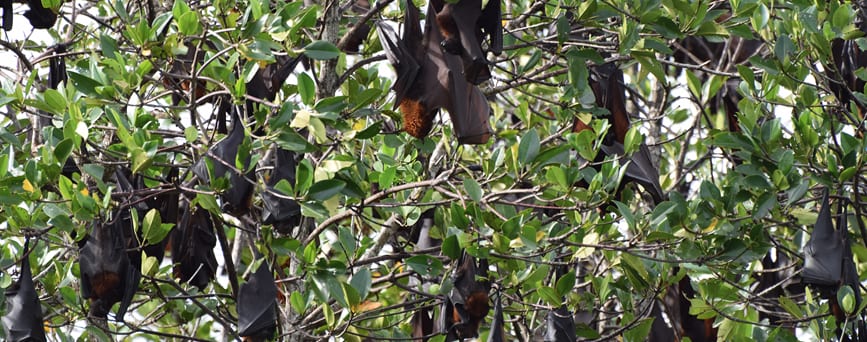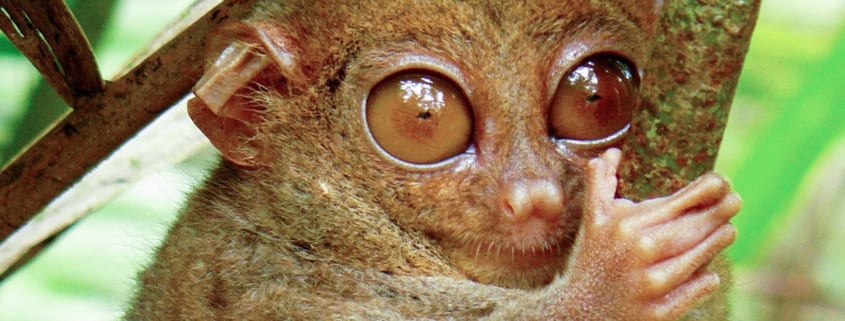New Protected Area Designated to Safeguard Endangered Bats and Rats
The Municipality of Tubajon in the Philippines just announced the designation of a new protected area on Dinagat Island, one of the country’s smaller islands off the north coast of Mindanao. The Tubajon Bat Sanctuary is approximately 3,500 acres and secures habitat for numerous threatened and endemic species such as the Dinagat Bushy-tailed Cloud Rat, the shrew-like Endangered Dinagat Gymnure (also known as the Dinagat Moonrat) and the endemic Dinagat Tarsier, a recently discovered primate distinct from its relatives, the Philippine Tarsier.

Rainforest Trust teamed up with local partner GREEN Mindanao to create this new reserve as the second stage of a much larger project that will establish four new protected areas for a total of more than 16,000 acres — an area larger than Manhattan — in order to save the island’s unique and endangered fauna and flora. Dinagat Island is home to 400 plant species and more than 100 bird species.
“This designation by the Tubajon government will help provide a permanent safe haven for many unique species on Dinagat,” said Rainforest Trust CEO Dr. Paul Salaman. “It is an important step in protecting this vital habitat from mining and other threats.”
Community engagement and involvement in the creation and management of the new protected areas are integral components of the project. Led by teachers, church workers and local indigenous groups, there is a palpable desire for conservation and sustainable development on Dinagat Island, as evidenced by community-led protests against destructive mining companies. A management council composed of representatives from the municipal government and local people will oversee the new protected areas, with forest guards and local police enforcing new regulations
An anti-mining congresswoman native to the island along with local officials are negotiating with mining interests to select where the new protected areas will be established. So far, these officials have secured the approval of nine out of 10 participating mining companies. Financial support will be utilized to map and delineate the new protected areas, as well as enable workshops for management and protection training. Patrol equipment, ranger stations, wildlife habitat assessments and policy adoption are key components of this project.





